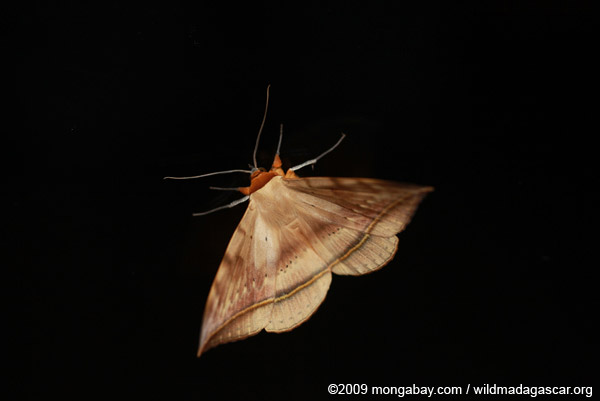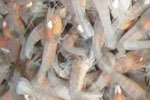
Unidentified moth in Madagascar. Photo by: Rhett A. Butler.
In 2009 researchers described and named 19,232 species new to science, pushing the number of known species on Earth to just under two million (1,941,939 species), according to the State of Observed Species (SOS). Discoveries included seven new birds, 41 mammals, 120 reptiles, 148 amphibians, 314 fish, 626 crustaceans, and 9,738 insects. Non-animals included 1,360 species of fungi and 2,184 new plants.
The species discovered in 2009 represent a 5.6 percent rise from 2008. Insects represented 50 percent of total new discoveries while plants came in next at 11.3 percent. Most of new the insects were beetles (3,485) while the vast majority of amphibians (90 percent) were frogs, and most of the new mammals (83 percent) were bats or rodents. New species are largely uncovered in biodiverse places like rainforests or little explored regions such as caves and the deep oceans.
Even as researchers near the two million species mark, they admit there is much further to go.
“A reasonable guess is that 10 million additional plant and animal species await discovery by scientists and amateur species explorers,” said the report’s author, Quentin Wheeler, an ASU entomologist. If the current rate of discovery continues, it will take taxonomists over 400 years to describe the world’s estimated 10 million (non-microbial) species.
If microbes are thrown-in, descriptions could take millennia.
“It has been speculated […] that marine microbial species alone could number 20 million,” Wheeler says. In 2009 researchers described 1,107 new microbes.
While the 2009 data took two years to compile, researchers hope the process can be sped up.
“In the animal world it takes about two years to mine the international literature for evidence of newly named species. The current lack of registration requirements simply compounds the problem of an already massive backlog,” Wheeler said.
Even as thousands of new species are uncovered annually, many more species may vanish before scientists find them. Extinction rates are currently estimated at 100 to 1,000 times higher than the background extinction rate (i.e. the average extinction rate as determined by studying fossils), leading scientists to warn of a mass extinction that could rival the comet that destroyed the dinosaurs.
Related articles
Beyoncé honored with new horse fly named after her
(01/16/2012) Musical artists, and dancer extraordinare, Beyoncé has been awarded a new honor this week: entomologists in Australia have named a new horse fly after the American singer. The new horse fly, dubbed Scaptia beyonceae, is found in Queensland’s Atherton Tablelands.
Photos: scientists find new species at world’s deepest undersea vent

(01/10/2012) It sounds like a medieval vision of hell: in pitch darkness, amid blazing heat, rise spewing volcanic vents. But there are no demons and devils down here, instead the deep sea vent, located in the very non-hellish Caribbean sea, is home to a new species of pale shrimp. At 3.1 miles below (5 kilometers) the sea’s surface, the Beebe Vent Field south of the Cayman islands, is the deepest yet discovered.
Photo: Tiny lemur discovered in Madagascar forest
(01/08/2012) A new species of mouse lemur has been discovered in eastern Madagascar, report researchers from Germany. The species is described in a recent issue of the journal Primates.